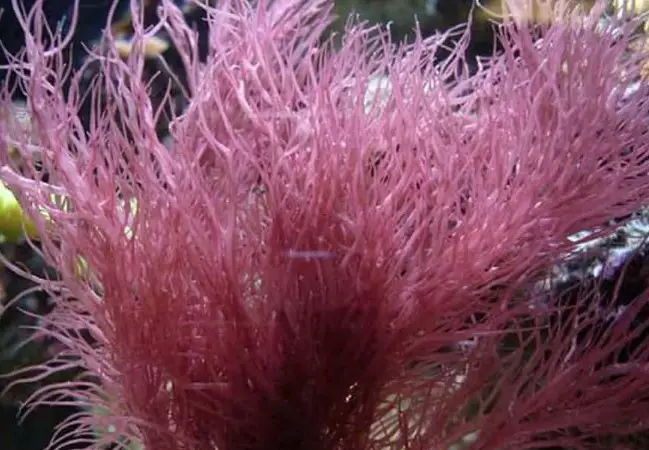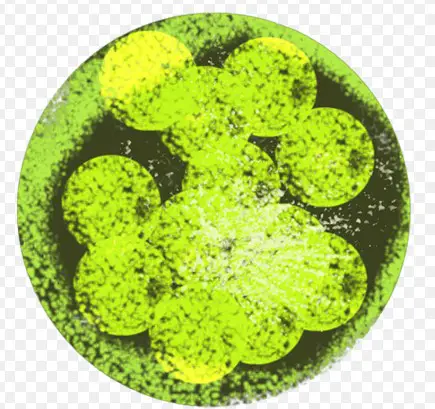Algae, often viewed simply as green growths in water bodies, are complex and diverse organisms critical to both ecosystems and human industries. These organisms are broadly categorized into two types: macroalgae and microalgae. Each plays unique roles in their environments and offers different benefits and uses. Macroalgae are larger, often seen clinging to rocks in coastal waters, while microalgae are microscopic, populating both freshwater and marine environments.
Macroalgae and microalgae differ primarily in size, habitat, and physiological structure. Macroalgae, visible to the naked eye, resemble underwater plants and are commonly known as seaweeds. On the other hand, microalgae are minuscule, single-celled organisms that contribute significantly to aquatic food chains and oxygen production. While macroalgae are mainly found in marine environments, microalgae thrive in a variety of water bodies, from oceans to freshwater lakes.
Both types of algae are pivotal to environmental health and human economies. Macroalgae serve as habitat and food for numerous marine species and are harvested for food, cosmetics, and fertilizers. Microalgae are harnessed for their potent nutritional content and are at the forefront of research for biofuel production due to their ability to efficiently capture carbon dioxide.

Defining Macroalgae
Characteristics of Macroalgae
Macroalgae, commonly referred to as seaweeds, are large, photosynthetic organisms found predominantly in marine environments. Unlike plants, macroalgae lack true roots, stems, and leaves but have structures analogous to them which perform similar functions. These include holdfasts for anchorage, stipes resembling stems, and blades that act like leaves. Macroalgae are crucial for carbon absorption and serve as vital components in marine habitats by providing food and shelter to diverse marine life.
Types of Macroalgae
There are three primary groups of macroalgae, classified based on their pigmentation and specific characteristics:
- Green Algae (Chlorophyta): Often found in shallow waters, green algae possess chlorophyll that gives them their vibrant color. Examples include sea lettuce (Ulva) and dead man’s fingers (Codium).
- Red Algae (Rhodophyta): Known for their deep red or purple hues, red algae thrive in deeper, cooler waters. They are essential for producing agar and carrageenan. Notable types include dulse (Palmaria) and nori (used in sushi).
- Brown Algae (Phaeophyceae): The largest and most complex type, brown algae are predominantly found in cold waters. Kelp and sargassum fall into this category, forming extensive underwater forests and floating mats, respectively.
Common Environments
Macroalgae are primarily marine-based and are abundantly found along rocky shores where sunlight penetrates the water efficiently. These organisms can also thrive in brackish environments and are integral to the ecosystem of many coastal regions. Their ability to adapt to different tidal zones and water conditions makes them a pivotal element in maintaining coastal biodiversity.
Defining Microalgae
Characteristics of Microalgae
Microalgae consist of microscopic, unicellular organisms that can exist individually or in colonies. They are renowned for their ability to perform photosynthesis efficiently under various light conditions. Microalgae are pivotal in aquatic ecosystems, contributing significantly to global oxygen production and acting as the base of the aquatic food chain. They are also celebrated for their fast growth rates and biomass production, which are valuable in environmental management and commercial applications.
Types of Microalgae
Microalgae are categorized into several types based on their pigmentation, structure, and habitat:
- Diatoms (Bacillariophyta): These are known for their unique silica cell walls that form intricate and beautiful patterns.
- Green Algae (Chlorophyta): Microscopic cousins to their macro counterparts, these are prevalent in both freshwater and marine systems.
- Blue-Green Algae (Cyanobacteria): Technically bacteria, they are often grouped with microalgae due to their photosynthetic ability and aquatic habitats.
Microalgae in Ecosystems
Microalgae are fundamental to nutrient cycling and primary production in both freshwater and marine ecosystems. They are capable of rapid population growth under suitable conditions, which can lead to algal blooms. While often seen as a nuisance, these blooms can also indicate vital ecological processes at work, such as nutrient cycling and carbon fixation.
Physical Differences
Size Comparison
The most noticeable difference between macroalgae and microalgae is their size. Macroalgae can grow several meters in length, making them visible to the naked eye and capable of forming large underwater structures like kelp forests. In contrast, microalgae are typically only a few micrometers in diameter and require a microscope to be seen.
Structural Distinctions
Macroalgae have a more complex structure, mimicking plant-like features which help in anchorage and nutrient absorption. Microalgae, being predominantly unicellular, lack these complex structures but are incredibly versatile in their physiology and metabolic processes.
Color Variations
Color in algae is determined by the types of pigments present, which also dictate the depth and type of water they can inhabit. Macroalgae display a broader range of colors visible to the naked eye, while microalgae, though varied in color, often require microscopic analysis to distinguish their pigments.
Habitat and Ecology
Macroalgae Habitats
Macroalgae are commonly found in tidal and subtidal zones of temperate and polar regions, with some species also thriving in tropical environments. They form the backbone of many marine ecosystems, providing essential services such as habitat structure and primary production.
Microalgae Ecological Roles
Microalgae are ubiquitous in both freshwater and marine ecosystems. They play a key role in aquatic food webs, serving as the primary producers that feed everything from zooplankton to large marine vertebrates. Their ability to quickly utilize nutrients and convert them into organic matter makes them effective supporters of life.
Adaptations to Environments
Both macroalgae and microalgae have evolved unique adaptations to survive and thrive in their respective environments. Macroalgae, for instance, may develop floatation aids to access sunlight in deeper waters, while microalgae can alter their photosynthetic machinery to adapt to different light levels and nutrient availabilities. These adaptations highlight the resilience and ecological importance of algae across the globe.

Economic Importance
Macroalgae in Industry
Macroalgae have carved a significant niche in various industries due to their unique properties and sustainability. Key sectors that benefit from macroalgae include:
- Food Industry: Macroalgae are a staple in Asian cuisines, used in products like sushi, salads, and snacks. Their ability to thicken and stabilize food products makes them invaluable in the manufacturing of ice cream and jellies.
- Agriculture: Algae-based fertilizers are renowned for their rich nutrient content, promoting plant growth without the environmental downsides of chemical fertilizers.
- Biomedical Field: The natural bioactive compounds in macroalgae are exploited for their antiviral, antibacterial, and anticancer properties, making them critical in medical research and pharmaceuticals.
Microalgae in Biotechnology
Microalgae are a powerhouse in biotechnological applications, particularly due to their efficiency in photosynthesis and rapid biomass production. They play pivotal roles in:
- Biofuel Production: Microalgae can produce large amounts of lipids and carbohydrates, which are converted into biodiesel and bioethanol.
- Carbon Sequestration: These organisms can capture carbon dioxide from the atmosphere, aiding in reducing greenhouse gas emissions.
- Wastewater Treatment: Microalgae are used in bioremediation processes to remove pollutants from wastewater, turning a waste disposal problem into an opportunity for resource recovery.
Comparative Advantages
When comparing macroalgae and microalgae, several advantages emerge:
- Scalability: Microalgae can be cultured in large bioreactors or open ponds, allowing for scalable growth systems.
- Resource Efficiency: Microalgae require less land and water than terrestrial biofuel sources.
- Versatility: Macroalgae’s structural properties make it ideal for bio-packaging, offering a sustainable alternative to plastics.
Nutritional Content
Macroalgae Nutritional Benefits
Macroalgae are not only a low-calorie food but also a rich source of vitamins, minerals, and fiber. They are particularly high in iodine, which is essential for thyroid function, and contain notable amounts of vitamin K, calcium, and magnesium. Their high antioxidant content also helps in fighting oxidative stress, supporting overall health.
Microalgae as a Superfood
Microalgae like spirulina and chlorella are celebrated as superfoods, due to their concentrated nutrient profiles. Benefits include:
- High Protein Content: Both spirulina and chlorella consist of about 60% protein, including all essential amino acids, making them excellent supplements for vegetarian diets.
- Rich in Omega-3 Fatty Acids: Microalgae are one of the few plant sources of EPA and DHA, crucial for brain health.
- Detoxification Properties: Known for their detoxifying properties, especially in removing heavy metals from the body.
Analysis of Key Components
The key components that make algae so nutritious include:
- Polysaccharides: Effective in improving digestion and immune system function.
- Phycobiliproteins: These have anti-inflammatory and antioxidant effects.
- Carotenoids: Crucial for protecting cells from damage and supporting eye health.
Environmental Impact
Macroalgae and Carbon Fixation
Macroalgae are efficient at sequestering carbon. Through photosynthesis, they convert CO2 into organic carbon, storing it in their tissues. Coastal ecosystems such as kelp forests are particularly capable of capturing significant amounts of carbon, helping to mitigate the impacts of climate change.
Microalgae in Biofuel Production
Microalgae have garnered attention for their potential in sustainable biofuel production. They can produce significant amounts of lipid-rich biomass that can be converted into biofuels. This process not only provides a renewable energy source but also consumes CO2, making it a doubly beneficial technology.
Role in Climate Mitigation
Algae play an essential role in climate change mitigation by absorbing CO2 during photosynthesis. They are a critical component of the marine carbon cycle and help reduce the excess carbon in the atmosphere.
Research and Innovations
Latest Research on Macroalgae
Recent advancements in macroalgae research focus on improving cultivation techniques and increasing biomass yield. Innovations include hybrid cultivation systems that integrate aquaculture and macroalgae production, enhancing both environmental sustainability and economic viability.
Technological Advancements with Microalgae
Technological developments in microalgae cultivation involve genetic engineering to enhance lipid production for better biofuel quality. Another significant innovation is the use of photobioreactors that optimize light exposure, increasing microalgae growth rates substantially.
Future Prospects in Algae Technology
The future of algae technology looks promising with potential applications extending to carbon capture and storage (CCS) technologies, nutrient recovery from wastewater, and even space missions, where algae could support life by providing oxygen and food while recycling carbon dioxide.
Frequently Asked Questions
What are the main types of macroalgae?
Macroalgae can be classified into three main groups: green, red, and brown algae. These types are distinguished by their distinct pigments, which influence their color, depth of water colonization, and nutrient profiles.
How do microalgae benefit the environment?
Microalgae play a crucial role in carbon fixation, acting as a natural sink for carbon dioxide and producing a significant portion of the Earth’s oxygen. Their rapid growth rates and high yield make them excellent candidates for biofuel production and climate change mitigation strategies.
Can macroalgae and microalgae be used in food?
Yes, both macroalgae and microalgae are edible and highly nutritious. Macroalgae are commonly used in cuisines around the world, notably in seaweed salads and sushi rolls. Microalgae, such as spirulina and chlorella, are used as dietary supplements for their high protein content and rich vitamin profiles.
What are the economic uses of microalgae?
Microalgae have extensive applications in the pharmaceutical, cosmetic, and food industries. They are used to produce omega-3 fatty acids, natural colorants, and antioxidants. Their potential in sustainable biofuel production is also a significant area of economic interest.
Conclusion
In sum, macroalgae and microalgae are not only fundamental to maintaining ecological balance but also offer vast potential for sustainable industrial applications. These organisms contribute significantly to biodiversity, support marine life, and play integral roles in the biogeochemical cycles of our planet. The continued study and utilization of both macroalgae and microalgae will likely be pivotal in addressing future environmental and economic challenges.
Understanding the differences between macroalgae and microalgae enriches our knowledge of the natural world and highlights the innovative ways these organisms can be leveraged for environmental sustainability and human benefit. As research progresses, the potential applications of algae are expanding, promising exciting developments in the fields of biotechnology, environmental science, and beyond.

